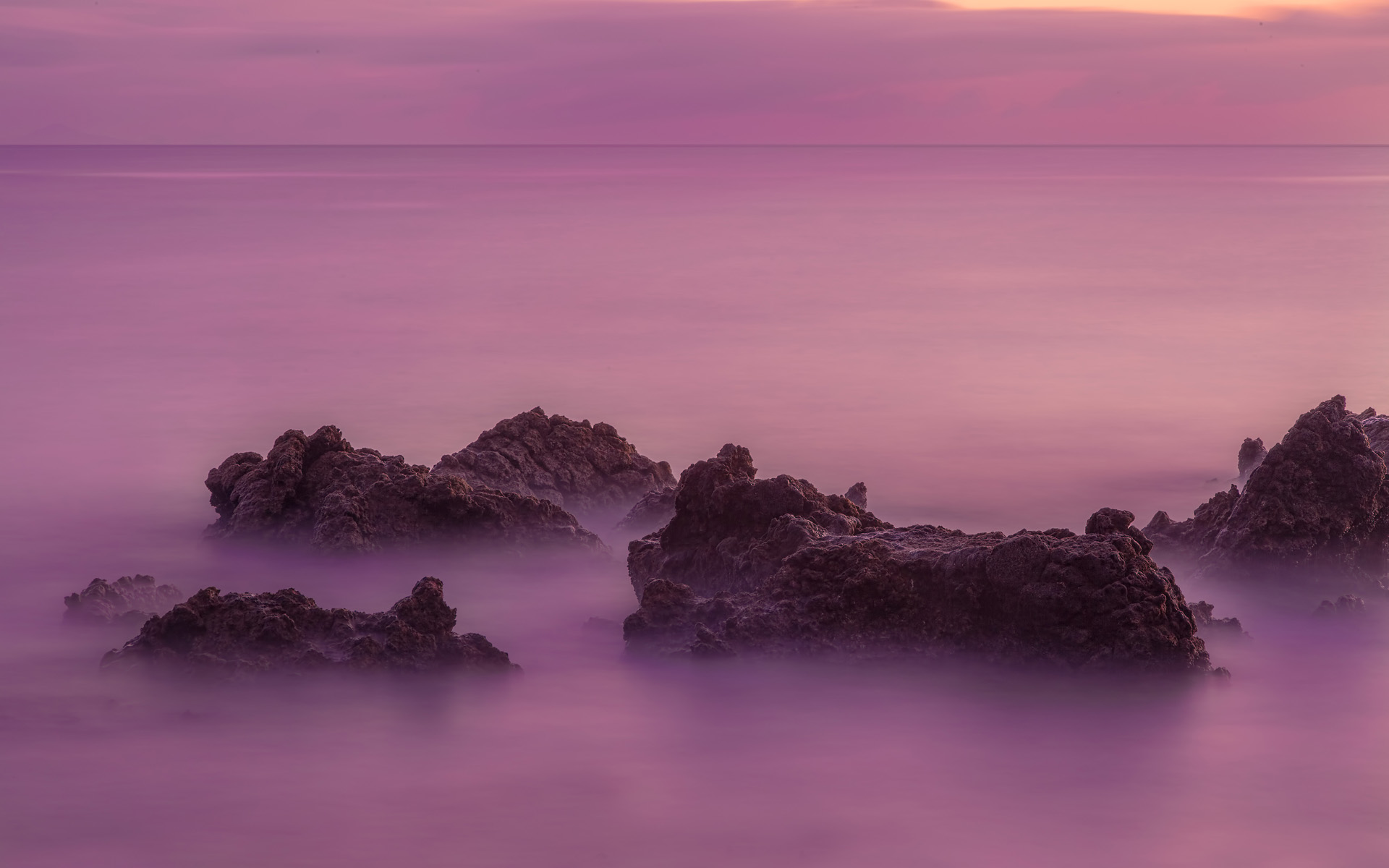 |
| I took this photo during sunrise. There was storm over the island in the back (Lanzarote) and it was initially heading in my direction but then the wind direction changed so I could stay and continue taking photos. |
Is there any sense of having a photography related blog? Well, I'm sometimes not sure about this.
For me and probably for many other photographers writing a blog is one of the most important aspects of their existence in the Internet. Ok, I have Facebook account, as well as Google+, Flickr, 500px, Twitter, Pinterest and probably even more I don't remember now... but it is my blog that is the most important for me. I use the services mentioned mainly to share my new photos or blog posts :) and view photos of other photographers. Sometimes (rather rarely) I also put a short update on some progress with photo processing or something like that. But it is the blog where I share my ideas about photography and knowledge because I think it is the best for this purpose. I can write as long posts as I want and they won't get trimmed as they do on Facebook, I can put as many photos as I want in a single update and so on. I can even influence formatting and style of my posts to make them look the way I want. I have much greater control over my contents than anywhere else.
The main "problem" I think is that taking a look at a picture on FB/500px/Google+ and clicking
like/vote/+1 takes seconds literally (I think that there are even people who don't look at a photo but do it semi-automatically in hope you will also click +1 on their own photos). Writing a comment like
"Great capture" also takes just a few seconds. And then you can switch to another photo, like it and put the same
"Great capture" comment, switch to another photo and so on. With blog or website it's not that easy. You have to enter it for particular reason - you might be interested in a subject of a post, there might be some interesting tutorial, you could find it on Google while looking for something and so on. However, it's much more difficult to get as wide audience as on social services for that very reason - you have to leave Facebook/Google+ and enter another site. If the post is long and not interesting for you, you will leave immediately without reading it and you won't also take a look at other posts by the author.
Another thing is that there are plenty (probably tens of thousands or hundreds of thousands) of great photography blogs out there. And from this large masses only a few will succeed. It's all about topics they cover, quality of their photos and also a bit of luck. Without luck even the greatest blog can in theory go unnoticed. This might silly but sometimes I'm shocked seeing great photographers on Flickr or 500px having just a few comments under their photos. And some of them take absolutely amazing images. So yes, luck is also a player here :)
So if we consider the audience blogs are often worse than any other platform. But there is other aspect I already mentioned. You can share your thoughts in a way you control. It's the reason I have a blog. I love sharing my knowledge. I learned this as a game programmer in the past where almost no one makes secrets about technology they use. Take the best game visually and you will find plenty of articles, presentations and blog posts about technology they used when producing it - most of them completely for free. Why? I believe the reason for this is that game programming as an industry evolves all the time and to make the progress faster it is essential we share knowledge so someone else can build on that and improve our own technology. There are plenty of photographers who think the same, I'm amongst them for sure. All I know I learned from someone else or by trial and error. Just a digression :)
So summing up, I'm generally not disappointed with my blog as I see all the major statistics increasing week by week and month by month (and it's such a motivating thing!). However, I know that to get more visitors on a blog it costs me much more effort and time than on Facebook and it's somewhat irritating if I may put it this way :) I wish it was the opposite because I'm really not a big fan of social services but I'm a fan of good blogs :)














_1+(2)_2+(2)_HDR.jpg)


































